On my morning walk I came across these lovely Blue Quondong (Elaeocarpus grandis) fruit that had fallen to the ground at the end of our street. They had been there for a little while as they were not freshly fallen but had already started to dry out. Among them were a lot of the inner seed as well and I think the local cockatoo's have already had their fill of the fresh fruits at the top of the tree.
The Blue Quondong tree is a tropical rainforest tree native to the Australian east coast. The fruit is able to be eaten and is enjoyed by many birds and mammals. It is a natural bushfood to local indigenous people and is now sometimes grown in backyards where the fruit can be harvested and made into jams.

Having started my dyeing journey back in 2008 using natural ingredients, my interest is always peaked when I come across something that I might be able to extract some colour from and I love to experiment.
When approaching getting dye liquor from these Blue Quondong seeds I treated it much like you would a bark as the seed in the middle is very hard wood. The red of the seeds gave me hope that maybe I could get a reddish brown or salmon pink. I only collected enough to dye a 20 gram mini skein as this was just for experimental purposes but theoretically, the more dyestock you have per weight of fibre the stronger the dye liquor and the resulting colour.
The handful you see in the photo is all I used to get the colour shown.




